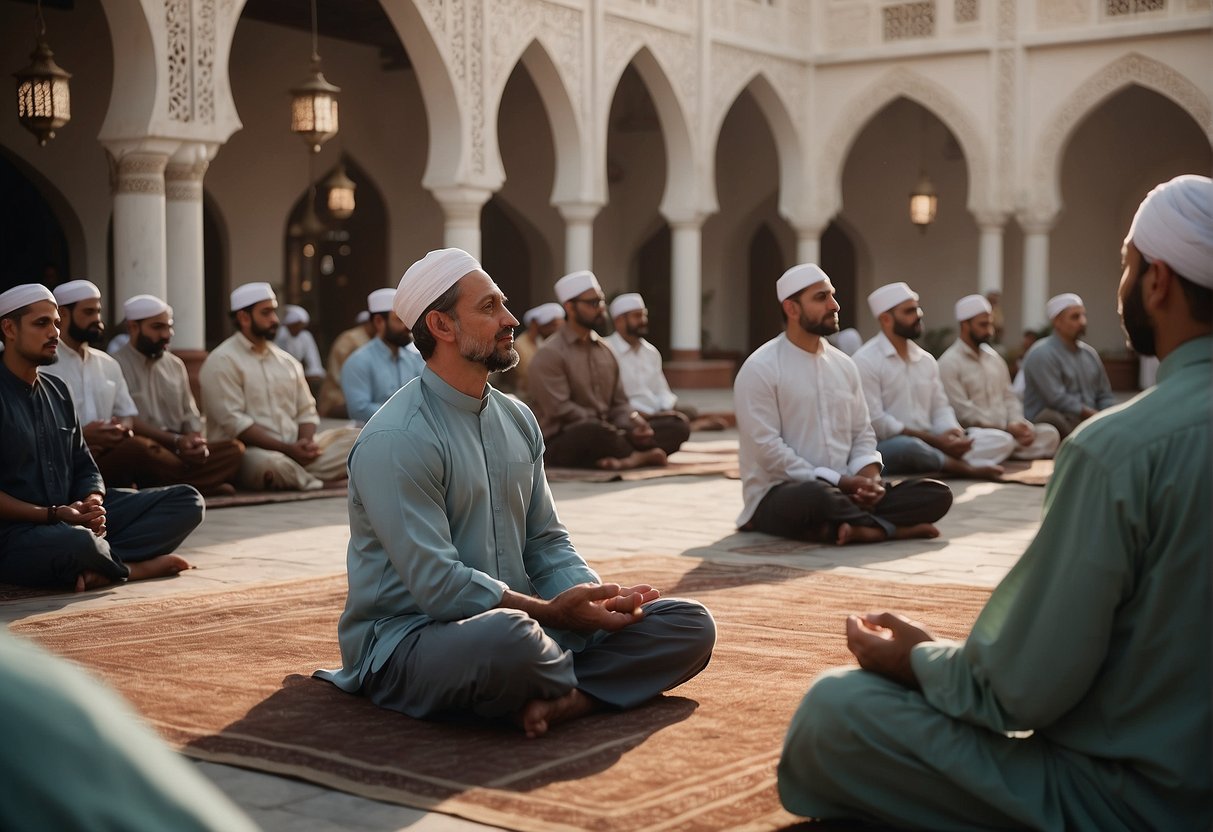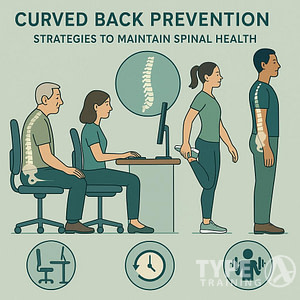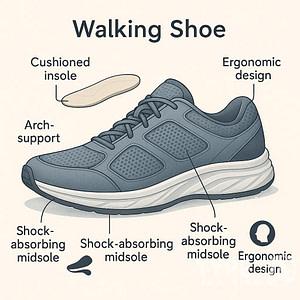Maintaining a workout routine during Ramadan can seem like a formidable challenge due to the physical demands of fasting from dawn until sunset.
Nevertheless, with thoughtful planning, it is entirely possible to combine fitness with the spiritual and reflective time of the holy month.
Recognizing that the body’s energy levels and hydration status will fluctuate makes it essential to adapt your exercise regimen accordingly to maintain both your spiritual and physical well-being during Ramadan in 2025.
Popular posts:
As the month progresses, you’ll find that the key to successful workouts lies in careful scheduling and nutritional strategy.
Opting for lower intensity workouts or timing your exercise sessions during non-fasting hours can help you stay active without compromising your fasting.
Additionally, focusing on balanced nutrition during Suhoor and Iftar will provide the necessary fuel for your body, while also helping you avoid weight gain.
Ensuring adequate rest and recovery is also crucial, as it allows your body to heal and maintain optimal health throughout the fasting period.
Key Takeaways
- Adjust your workout intensity and timing to accommodate your fasting state and energy levels.
- Consume balanced meals during non-fasting hours to support your fitness routine.
- Prioritize rest and recovery to sustain your health and well-being during Ramadan.
Preparing for Ramadan
Image source: GoodLife Fitness
As Ramadan 2025 approaches, there are essential steps you can take to ensure your well-being while observing the fast.
Focusing on nutrition strategies, adequate hydration tactics, and a well-thought-out fitness plan will allow you to maintain your physical health throughout this holy month.
Nutrition Strategies
To sustain energy levels during fasting hours, it’s crucial to develop a balanced diet plan.
Your pre-fast meal (suhoor) should be nutritious and include a mix of proteins, vitamins, and minerals.
Aim for complex carbohydrates for longer-lasting energy and incorporate foods like oats, whole grains, or sweet potatoes into your suhoor.
- Example Suhoor Menu:
- Whole grain bread, avocado, scrambled eggs
- Yogurt with nuts and mixed berries
Your iftar, the meal to break your fast, should start with dates and water, followed by a healthy meal that includes a balance of proteins, vegetables, and whole grains. Avoid heavy, oily food which can make you feel sluggish.
- Sample Iftar Snack:
- Dates and water
- Example Iftar Meal:
- Grilled chicken breast
- Steamed vegetables
- Brown rice or quinoa
Hydration Tactics
Staying hydrated is a challenge during Ramadan, but it’s necessary for your overall health.
Prioritize drinking sufficient water between iftar and suhoor to maintain hydration levels.
Tips to Enhance Hydration:
- Drink at least 8-10 glasses of water from iftar to suhoor
- Include water-rich fruits and vegetables in your meals
- Avoid caffeinated beverages as they can lead to increased urine output and dehydration
Fitness Plan Development
Creating a fitness plan that complements your fasting schedule can help maintain muscle mass and energy.
Engage in low to moderate-intensive workouts, ideally after you’ve had some water and food during non-fasting hours.
Workout Suggestions:
- Post-Iftar: Light cardio like walking or cycling
- Pre-Suhoor: Resistance training or yoga
Remember, the goal is to stay active without overexerting yourself. Listen to your body and adjust your activities as needed throughout the month.
Fitness During Ramadan
Maintaining an effective workout plan during Ramadan requires thoughtful modifications to your exercise routine.
Your focus should be on conserving energy while promoting strength, flexibility, and overall well-being.
Strength Training
Incorporate strength training within your routine to maintain and gently build muscle mass during Ramadan.
Choose low-impact exercises that can be done efficiently, such as bodyweight movements or light weightlifting.
Your training should aim to sustain muscle without over stressing your body, which is crucial given your altered nutritional intake.
Schedule these sessions during non-fasting hours to ensure you have the necessary energy levels for optimum performance.
Cardiovascular Exercises
Cardio exercises should be moderate to maintain your stamina and heart health.
Consider shorter sessions of low to moderate intensity workouts, for instance, brisk walking or easy cycling, especially in the cooler parts of the day.
It’s essential to remain mindful of hydration and energy reserves to avoid any undue stress on your body during your fast.
Flexibility and Mobility Workouts
Lastly, including flexibility and mobility workouts in your regimen enhances your range of motion and aids in muscle recovery.
Activities such as yoga or stretching can be immensely beneficial, as they are less taxing on your energy reserves yet instrumental in keeping your body agile and preventing injuries.
These workouts can be done at any time; however, you may find them particularly revitalizing during the early morning or late evening hours.
Schedule and Timing
In managing your workouts during Ramadan in 2025, you must carefully plan to harmonize your exercise schedule with fasting hours, ensuring you attain adequate rest and recovery.
Optimal Workout Times
Before Sunrise (Suhoor): Capitalize on the pre-dawn meal by engaging in a moderate workout before Suhoor ends.
This timing allows you to replenish immediately with food and water, sustaining your energy* levels for the day ahead.
- After Sunset (Iftar): Another opportune time to work out is after Iftar, once you’ve broken your fast.
This period is ideal as your body is rehydrated and refueled, offering better performance and reduced risk of dehydration.
Consider a balanced training session of low-impact exercises to optimize energy use without overexertion.
Rest and Recovery
Sleep Quality: Prioritize your sleep schedule to enhance recovery.
Aim for 7-9 hours of uninterrupted sleep, adjusting your bedtime or wake time to accommodate the changes in your eating schedule during Ramadan.
Active Recovery: Implement active recovery days with light activities such as yoga or walking.
This approach promotes circulation and aids muscle recovery, without overly taxing your body’s resources which are already challenged by fasting.
Your body’s need for downtime increases during fasting; recognize the signs of fatigue and respect your body’s limits.
Nutrition and Fitness Synergy
The synergy between nutrition and fitness during Ramadan is essential for you to optimize your workouts and maintain muscle mass.
Carefully chosen pre-workout meals and post-workout nutrition strategies can support your strength and recovery.
Pre-Workout Meals
Your pre-workout meal is crucial to provide you with the energy you need for your workout.
Opt for complex carbohydrates like whole grains, which will release energy gradually, alongside proteins such as lean meats or legumes that help with muscle endurance.
Integrate healthy fats from sources like avocados or nuts for prolonged energy. Here’s a brief list for your Suhoor, or pre-dawn meal:
- Complex Carbohydrates: oatmeal, brown rice, quinoa
- Protein: eggs, chicken breast, Greek yogurt
- Healthy Fats: almonds, chia seeds, olive oil
Post-Workout Nutrition
Post-workout is your opportunity to refuel your body.
Your meal should include protein to aid in muscle repair and carbohydrates to replenish glycogen stores.
Consuming fruits or having a smoothie can be refreshing while providing quick-release sugars for immediate energy replenishment.
Remember, rehydration is also key, so include plenty of fluids. Here’s a quick guide:
- Protein: protein shakes, cottage cheese, lentils
- Carbohydrates: sweet potatoes, berries, whole grain bread
- Hydration: water, electrolyte-enhanced drinks
Maintaining Muscle Mass
Maintaining muscle mass during Ramadan requires you to focus on consistent protein intake and engage in regular workouts, particularly with weights.
The combination of resistance training and protein-rich foods such as chicken, fish, or plant-based substitutes will assist in muscle preservation.
Consider the timing of your weight training sessions to align with your meal times for optimal muscle recovery.
Hydration Strategy
When observing Ramadan, especially during long fasting hours, staying hydrated is essential. Since you can only drink water during non-fasting hours, it’s vital to plan your hydration effectively.
Before Fast (Suhoor):
- Start with 1-2 glasses of water at Suhoor to initiate your day.
- Favor water or other caffeine-free fluids to avoid dehydration.
During Non-fasting Hours:
- Aim to drink at least 8-10 glasses of water between Iftar and Suhoor.
- Evenly space your water intake to maintain hydration without feeling too full.
Hydration Tips:
- Sip slowly rather than consuming large amounts quickly to better hydrate your body.
- Include water-rich foods at Iftar, such as fruits and vegetables, to help increase fluid intake.
Avoid:
- Overconsumption of caffeinated beverages as they may lead to increased urine output and potential dehydration.
- Excessively cold water, which can be a shock to the system and might upset your stomach.
Your hydration strategy should be thoughtful and individualized. Your activity level, the climate you live in, and your body’s unique needs will influence your hydration requirements. Plan accordingly and listen to your body’s signals.
For more on incorporating hydration with fasting, consider reading about Hydration: The Cornerstone of a Healthy Fast.
Rest and Recovery
During Ramadan, balancing your workout routine with sufficient rest and recovery is crucial for your body’s health and well-being. Fasting can be physically demanding, and adapting your exercise schedule to include rest days is essential.
- Prioritize Sleep: Ensure you get an adequate amount of sleep each night to help your body repair and recover.
- Time Your Workouts: Plan to work out during non-fasting hours, such as after Iftar or before Suhoor, as suggested by Al Arabiya, to avoid dehydration.
In between exercise sessions, rest is not just a recommendation; it is necessary to help your body recuperate and to maintain energy levels. Here are a few recovery tips:
- Hydration: Drink plenty of fluids during non-fasting hours to aid muscle recovery.
- Nutrition: Eat balanced meals that provide the nutrients your body needs to recharge.
- Light Activity: Consider gentle and low-impact exercises like yoga or walking on your rest days to stay active without overexerting yourself.
Lastly, listen to your body and reduce the intensity of workouts if you feel the need. Your body’s requirements can vary significantly from day to day during Ramadan, as emphasized by Men’s Health. Adjusting your routine accordingly is not only sensible but also a sign of respecting your body’s limits. By managing rest and recovery appropriately, you can maintain fitness while observing your fast effectively.
Mind, Body, and Spirit
During Ramadan, Muslims aim to synchronize the wellness of mind, body, and spirit through modified exercise routines, reflection, and communal activities. You’s experience a unique opportunity for personal growth and community connection.
Stress Management
Managing stress is crucial when fasting during Ramadan. Your body will undergo a change in routine, so select lighter exercise activities to prevent overexertion.
Frequently Asked Questions
When training during Ramadan, planning your workouts and nutrition wisely is crucial. Below, you’ll find specific guidelines to help optimize your fitness regime during this holy month.
What are the best practices for exercise during Ramadan fasting hours?
To exercise during fasting hours, it’s recommended to engage in low-intensity activities such as walking or yoga. This helps conserve energy and aligns with the spiritual and physical mindset of Ramadan.
How can one maintain muscle mass while observing Ramadan?
Maintaining muscle mass requires focusing on resistance training and consuming sufficient protein during non-fasting hours. Timing your workouts an hour or two after Iftar can also be beneficial as you can eat and hydrate beforehand.
What are the optimal times to engage in physical activities during Ramadan?
The most optimal times for physical activity are either before Suhoor or after Iftar to ensure you can hydrate and refuel your body. During these hours, you can perform more intense workouts without the risk of dehydration or significant energy depletion.
How does intermittent fasting during Ramadan affect athletic performance?
Intermittent fasting during Ramadan can lead to temporary changes in athletic performance, such as reduced endurance and energy levels. Adjusting the intensity and timing of workouts is essential for maintaining performance.
What types of workouts are most effective during Ramadan for staying fit?
During Ramadan, focus on maintaining fitness rather than making significant gains. Combination workouts that include bodyweight exercises, light resistance training, and stretching are most effective.
What nutritional considerations should be taken into account to support exercise in Ramadan?
Optimal nutrition during Ramadan includes a balanced intake of carbohydrates, proteins, and healthy fats during non-fasting hours.
Prioritize hydration and nutrient-rich meals after sunset to support your exercise routine.














